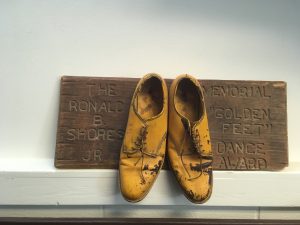Genre Oral Narrative, Tradition
Language English
Country of Origin United States
Informant Dru Falco
Date Collected February 25, 2018
Collected by Laura Jeliazkov
Informant Data
Dru Falco is a senior at Dartmouth College, originally from Long Island, New York. Dru never hiked before coming to Dartmouth, but her First-Year Trips leader was head of the Cabin and Trail (CnT) sub club of the Dartmouth Outing Club, and encouraged her to join. Now she is chair. Dru likes to run, knit, hike and read interesting novels in her free time. She has never worked explicitly for Lodge Crew, but she has been heavily involved in Dartmouth first-year Trips for the past couple of years all the same. She was a member of the Trips directorate two years ago. She led contradance nights last year. Her favorite thing about hiking is how it makes her feel – good about herself, and good about her community.
Contextual Data
Dartmouth First-Year Trips culminate at the Moosilauke Ravine Lodge, at the base of Mount Moosilauke in the White Mountains of New Hampshire. An assembly of upperclassmen – affectionately called the ‘Lodge Croo’ – are there to welcome, and ‘initiate,’ the Trippees back into [Dartmouth] civilization, after their outdoor explorations.
Part of the welcoming ceremony is a three-course dinner in the main dining hall, followed by a scary story. The scary story told is one most infamous. It is one which has been told for nearly all the decades of student gatherings on Mount Moosilauke. It is known – or at least has been heard – by most every Dartmouth undergraduate student. It is also known amongst some of the other outdoor communities of the Moosilauke region – such as youth nature camps, and girl scout / boy scout troops.
The Doc Benton story is a long-winded oral history. It has never been entirely written down, but there does exist a small cheat sheet. The story may only be told by an official designated storyteller – and this cheat sheet is passed down amongst them. There is much room for personal add-ons or variations. The story may last for hours – though in recent years its length has been more conservative.
Item
There is a boy, named Thomas Benton, who is really smart. He goes through all of the education that the village which he lives in has to offer. There is nothing more for him to be taught. And so they send him to a judge, who lives on the other side of the mountain, to continue his education. Then he learns everything which the judge has to offer. And so the village pools together the money for Thomas Benton to be sent to Germany, to study. There, he becomes interested in alchemy, and the study of how to live forever. When he has completed his education there, he returns to the village, and establishes himself as the village doctor. He marries, settles down and has a child. However, he hits some bad fortune, and his wife and child die from smallpox. This drives Thomas Benton mad. He moves to the edge of the woods, and no one sees or hears from him anymore.
One night a woman calls her daughter in for dinner: but the child does not respond. The woman looks out the window to see a dark figure carrying her daughter away into the woods. She assembles the whole village: they take their pitchforks and chase the figure to the edge of a ravine. Here they reach a standoff. They try to stop him, but are unsuccessful, and Thomas Benton throws the girl to her death.
Significance
This story is a piece of knowledge common to the Dartmouth student. It serves to link the Dartmouth folk group together.
http://raunerlibrary.blogspot.com/2010/09/legend-of-doc-benton.html




